
Anki Overdrive is a battle-racing game played by controlling real world cars on a physical track with a mobile device. I worked on this product extensively designing gameplay, interface, AI behaviors, and narrative aspects of the base Overdrive product and expansions.
Beyond the day to day design tasks, I grew into the role handling much more data driven, product planning roles that included A/B testing and product roadmap planning.
Control Revamp - Radical interface change to leading to higher retention and more fun gameplay
Supertrucks - Blank shell to ship in about 9 months
Takeover Gamemode - Innovation using existing AI to add value and resolve family conflicts
Fun Videos - Promotional video from various media outlets
Challenge
There wasn’t enough skill associated with controlling the vehicles, much less skills development. We had about 9 months to solve this while working on other aspects of the product. Early (and frequent) testing was the bedrock of finding the skill elements. I led the cross departmental process.
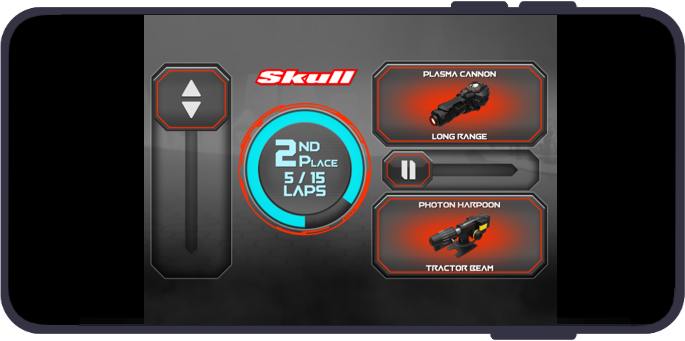
Controller pre-revamp
Process
I led a LOT of brainstorming sessions, worked with the robotics engineers, app engineers, audio designers, UX designers, artists and senior company stakeholders who had improvement suggestions.
Prototypes were put in playtester's hands. I put some REALLY early stuff in front of the playtesters, but the UX Researchers were excellent collaborators and were able to get excellent feedback from testers.
Control layout, simulation, and physical behavior changes ended up being the focus for improvements.
Improvements
Snap to lanes - Previously the movement was smooth when the player was moving side to side on the track by tilting the device. By communicating 4 distinct lanes and emphasizing a "snap to lane" feel when changing lanes via physical movement and audio cues, it helped players understand better what their actions were actually translating to on the track.
Dead man switch type controls for all cars - Previously, players didn’t have to think about the speed of their car. Using qualitative and quantitative data to find the right balance, I implemented a control scheme that required more active input, thus opening a way for players to improve their skills.
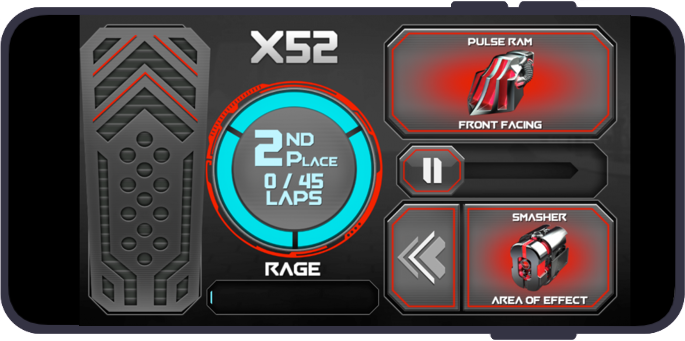
The "pedal"/"dead man switch" control on the left
Speed curves - With the implementation of the pedal design, I realized there was the additional opportunity to map different, non-linear speed characteristics to the more active pedal interface. Every vehicle had a unique speed characteristic after this change, which increased the likelihood of interest in people buying different cars.
Increased top speed - This was the most controversial change. The roboticists on the team and a portion of the player base were enthralled with the fact the cars would "magically" stay on the track no matter what. Unfortunately, this old method did not lead to surprising and engaging gameplay experiences that challenged the player. Through much A/B testing, I decided to implement an unlock system. It roughly tracked to the amount of time a player had played the game. The system would gradually increase the top speed the more time played, which eventually led to a speed that would allow the player to push their car to go so fast it would go off the track. The only way this change was allowed to ship at a company founded and run by roboticists was to show the live A/B testing data that this change increased retention, a topline goal of the Overdrive product at this stage.
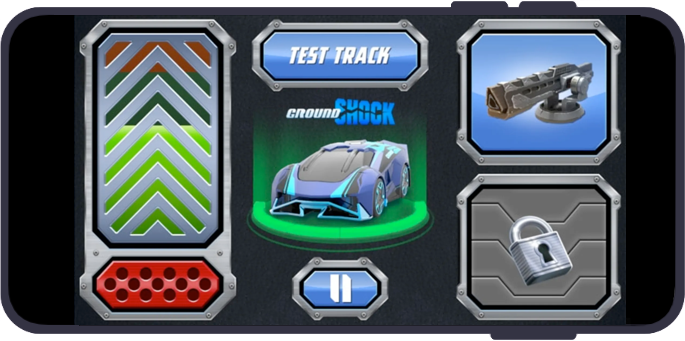
Final control layout after the control revamp
Outcome
The radical changes I led not only led to higher player retention, but caused the app engineering teams to revamp the architecture of the controller, which led to faster interations and a more stable code base.
Supertrucks
Challenge
One of the most interesting and ever present challenges of working on a marriage between a video game and physical objects is the need to be mass produced with about a year lead time. What this often meant is that often we would have a blank shell of a vehicle presented to us and I had to make gameplay, character, and behaviors to make them engaging and different enough to be worth buying.
For the Supertrucks project, I was the lead game designer and the nexus of a lot of the overall direction of the project.

Process
I started with the blank shell and the pre-existing game framework from the base game. I came up with the concept of contrasting the clean, futuristic highly controlled world with the rougher edged Supertrucks operating on the outskirts of society. This "outlands" setting then drove the look of characters in the game and the “bigger” , “badder”, “powerful” motiefs of driving the trucks.

Prototype "shell" I got from hardware team that needed gameplay created from scratch.
Improvements
Here is a promotional video where I am featured about Supertrucks and all the unique features they brought to the base Overdrive set:
Takeover Gamemode
Challenge
Every year on Overdrive, we shipped like clockwork to hit the holiday season. Nine to twelve months was the timeframe we had to create ideas and ship them. In this instance, Supertrucks were the new product add-on that I assumed that most players would only purchase one. There clearly needed a way to effectively enforce “taking turns” by taking advantage of the pre-existing AI.
Here graphic representations that show the defining characteristics of Takeover mode.
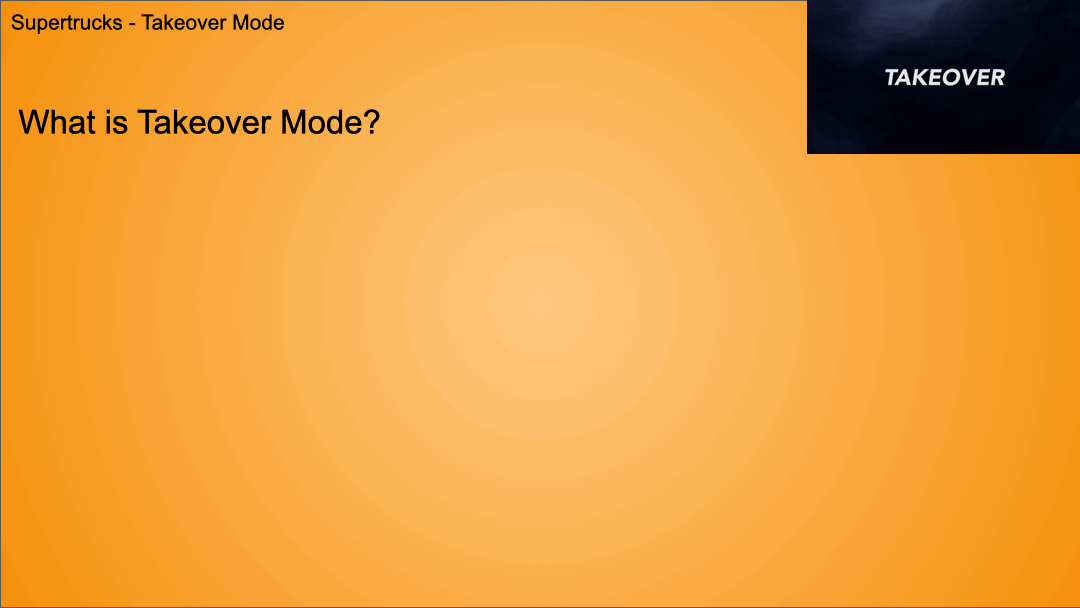
Takeover Mode - On the physical track

Takeover Mode - On Mobile Device
Not only did the physical track behavior have to change, the layout and look of the game controller had to change mid game.
It is impossible to undersell how much every design decision I made was an orchestration between the mobile device, the physical vehicles, the track, and AI.
Process
Through brainstorming, experimentation, user testing, and consultation with engineering teams, I settled on a mode that would push the control technology further than it had gone before, but it was seen as a valuable enough risk to take.
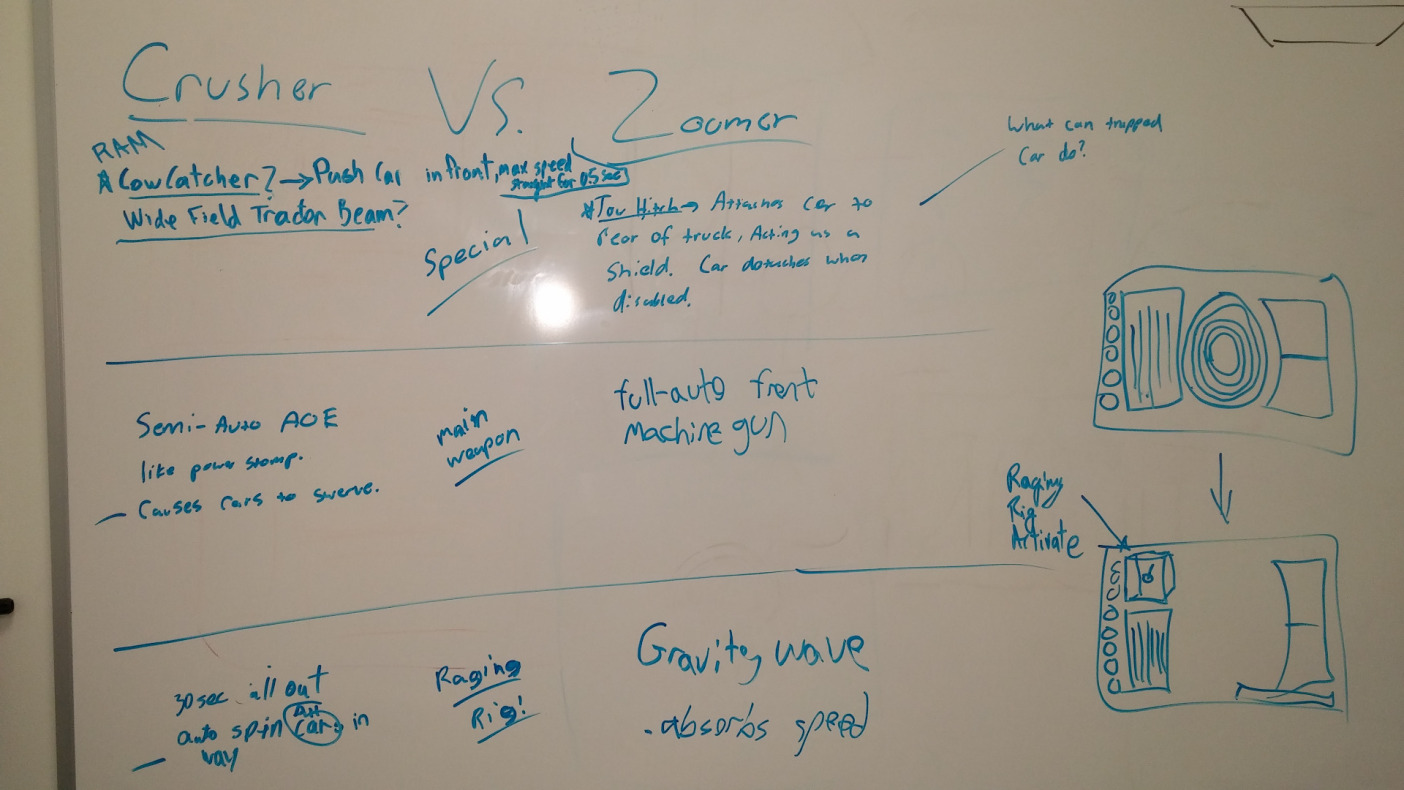
Whiteboard Brainstorming
I had to define the actions on the track (player taking control of another vehicle) clearly so the engineers, both for the real world simulation and phone UX elements, could implement the idea. Initially there was hesitation since we had never previously decoupled the idea of “player” and “vehicle” after the game had begun. My pushing for this mode helped the engineering teams clean up the code base to be more modular and flexible, which paid dividends in subsequent work on Overdrive.
We passed various versions of the mode to our amazing in house user testing team who brought players in on a regular basis to give feedback on what we were working on. They made this mode and everything we touched so much better. This project really crystalized my deep respect and dependence on user testing and making sure to give things to them as early and often as possible so whatever I’m working on can get better.
Improvements
Shipped a mode unique to supertrucks that successfully enforced a “taking turns” mechanic, removing the need for players to sort out amongst themselves whose turn it was. There was a substantial reward for the player who ended up with the truck.
The assumptions ended up being correct since the vast majority of the time when we saw a Supertruck show up in the data, it only appeared with the two cars in the starter kit.
Fun Videos
As part of my time on Overdrive, I was in a few different videos aimed at a few different audiences. I had so much fun doing these I just wanted to have them here for you to enjoy. :)
I lead the gameplay design for Overdrive: Fast and Furious Edition. This used the same underlying technology as Overdrive, but infused with characters and vehicles from the Fast and the Furious movie, F8.
